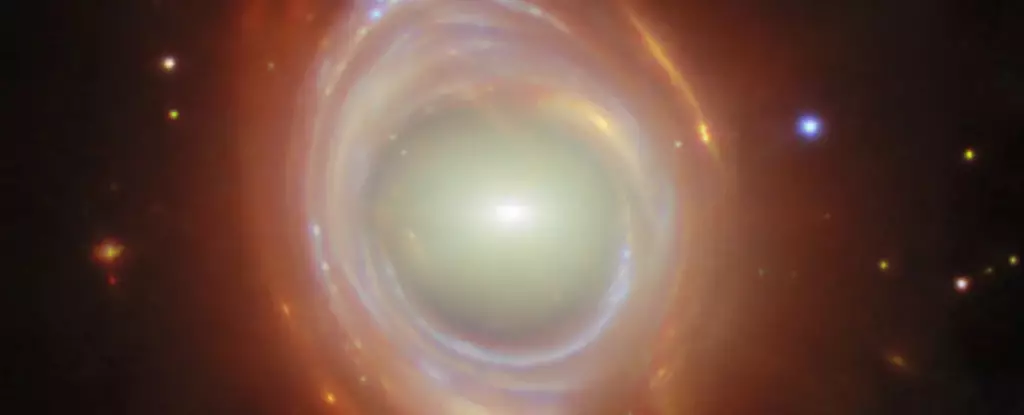General relativity, Albert Einstein’s groundbreaking theory, reshaped our understanding of gravity. One of its most captivating predictions is the bending of light around massive objects—in essence, the gravitational deflection of starlight. This phenomenon gained prominence in 1919 during a total solar eclipse, marking a pivotal moment in astrophysics. As light from distant stars passes near a massive celestial body, like our sun, it deviates from its original path, altering our perception of those stars. Rather than just a theoretical curiosity, this distortion offers tangible proof of the effects of gravity on light, a concept that was unfathomable before Einstein’s revelations.
The Marvel of Gravitational Lensing
However, the phenomenon extends beyond a simple deflection during an eclipse. Gravitational lensing occurs on a grand scale when a massive foreground galaxy obscures our view of a more distant galaxy. The closer galaxy’s gravity acts like a lens, bending and magnifying the light from behind. This lensing effect produces both captivating images and invaluable scientific data. As a result, astronomers have harnessed this cosmic lensing to study the very fabric of the universe, extending our grasp to previously invisible realms of space.
The Aesthetic Beauty of Einstein Rings
Among the most enchanting outcomes of gravitational lensing is the formation of what are known as Einstein Rings. When a distant galaxy is perfectly positioned behind a closer galaxy, the light is transformed into a mesmerizing ring of radiant arcs, showcasing nature’s artistry. Despite his genius, Einstein himself expressed skepticism about the possibility of ever witnessing these rings directly. His prescience was impressive, but the advancements in technology, particularly modern telescopes, have surpassed even the wildest expectations of his time.
Recent discoveries, notably from the James Webb Space Telescope (JWST), have illuminated the cosmos with dozens of these stunning Einstein Rings. One example, captured by JWST, features an elliptical galaxy enveloping a spiral galaxy akin to our Milky Way. This celestial duo reveals an intricate dance of light and gravity, crafting a visual narrative not just of astronomical significance but also of cosmic beauty.
The Perspective of Cosmic Observers
Interestingly, the wonder felt by us as observers is entirely contingent on our viewpoint in the vast universe. Should astronomers from another galaxy gaze upon our cosmic neighborhood, they would likely find a different tapestry woven with their unique vantage point. This aspect emphasizes the notion that beauty in the universe is both a subjective experience and a product of the beholder’s location in the great expanse of space.
As our understanding of these breathtaking phenomena deepens, we continue to redefine the aesthetic boundaries of the cosmos, showcasing the profound connections between light, gravity, and the cosmic landscape. The images generated by modern technology like JWST unveil not just scientific truths but also the timeless allure embodied within the universe.


Leave a Reply